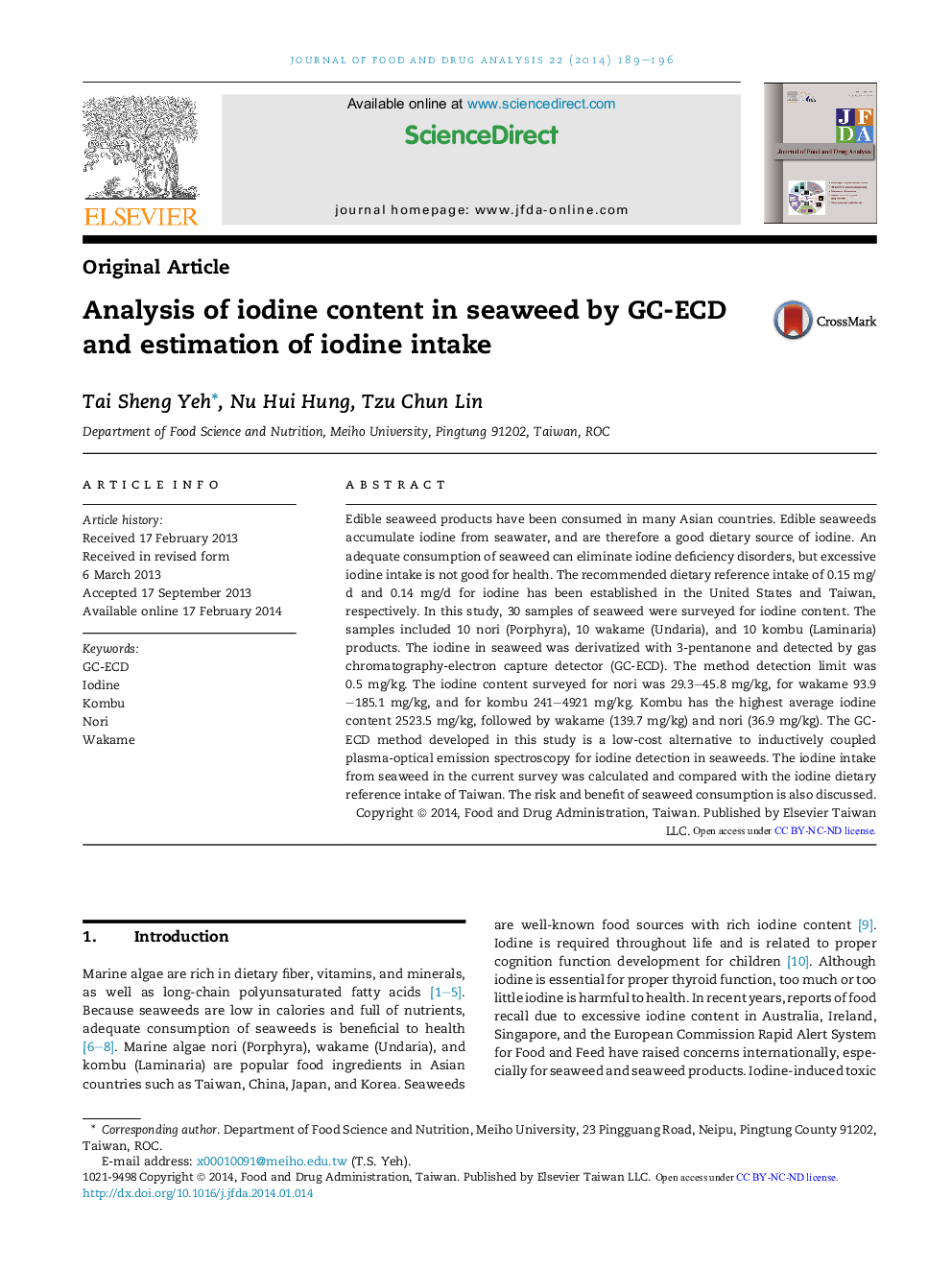| کد مقاله | کد نشریه | سال انتشار | مقاله انگلیسی | نسخه تمام متن |
|---|---|---|---|---|
| 2507415 | 1117487 | 2014 | 8 صفحه PDF | دانلود رایگان |

Edible seaweed products have been consumed in many Asian countries. Edible seaweeds accumulate iodine from seawater, and are therefore a good dietary source of iodine. An adequate consumption of seaweed can eliminate iodine deficiency disorders, but excessive iodine intake is not good for health. The recommended dietary reference intake of 0.15 mg/d and 0.14 mg/d for iodine has been established in the United States and Taiwan, respectively. In this study, 30 samples of seaweed were surveyed for iodine content. The samples included 10 nori (Porphyra), 10 wakame (Undaria), and 10 kombu (Laminaria) products. The iodine in seaweed was derivatized with 3-pentanone and detected by gas chromatography-electron capture detector (GC-ECD). The method detection limit was 0.5 mg/kg. The iodine content surveyed for nori was 29.3–45.8 mg/kg, for wakame 93.9–185.1 mg/kg, and for kombu 241–4921 mg/kg. Kombu has the highest average iodine content 2523.5 mg/kg, followed by wakame (139.7 mg/kg) and nori (36.9 mg/kg). The GC-ECD method developed in this study is a low-cost alternative to inductively coupled plasma-optical emission spectroscopy for iodine detection in seaweeds. The iodine intake from seaweed in the current survey was calculated and compared with the iodine dietary reference intake of Taiwan. The risk and benefit of seaweed consumption is also discussed.
Journal: Journal of Food and Drug Analysis - Volume 22, Issue 2, June 2014, Pages 189–196